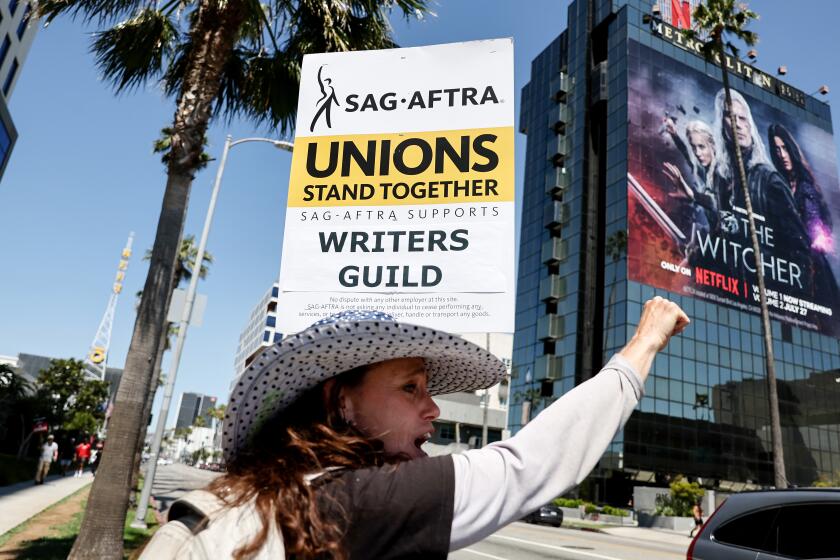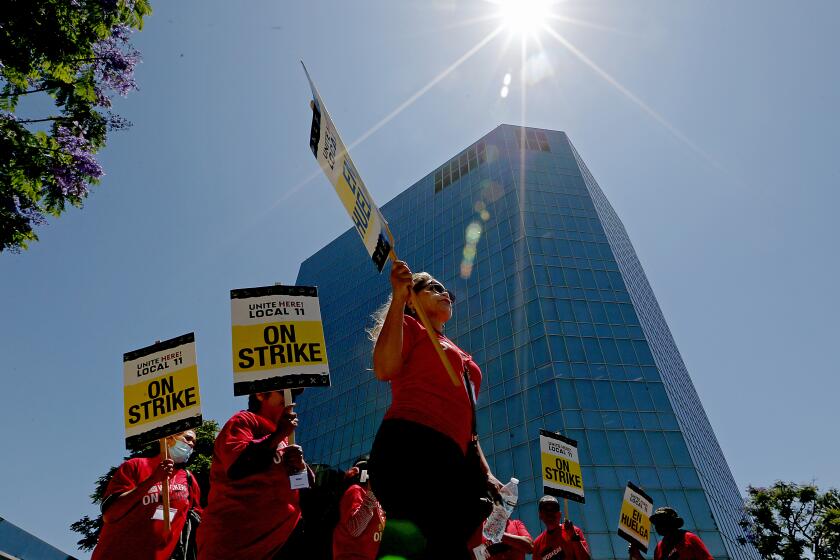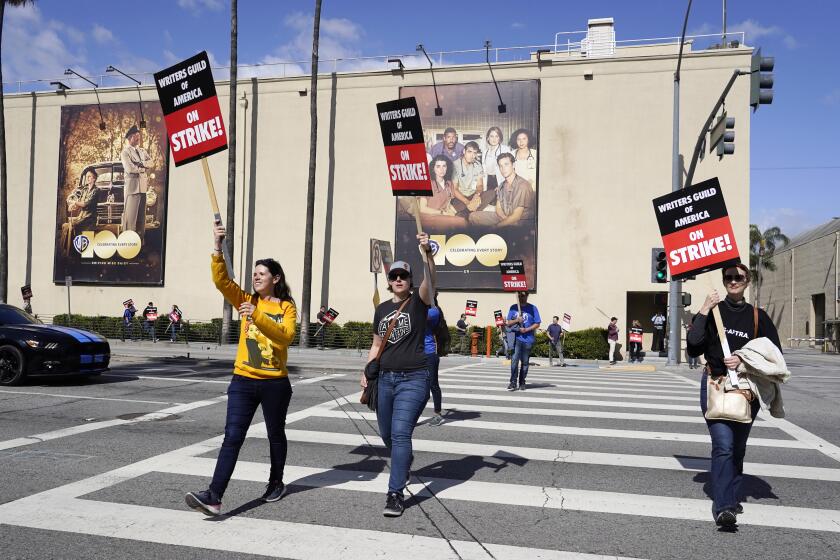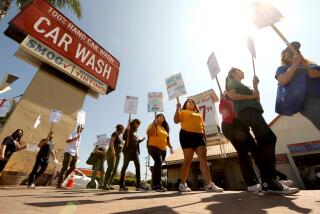Opinion: The SAG-AFTRA actors’ strike shows L.A. is leading the labor movement
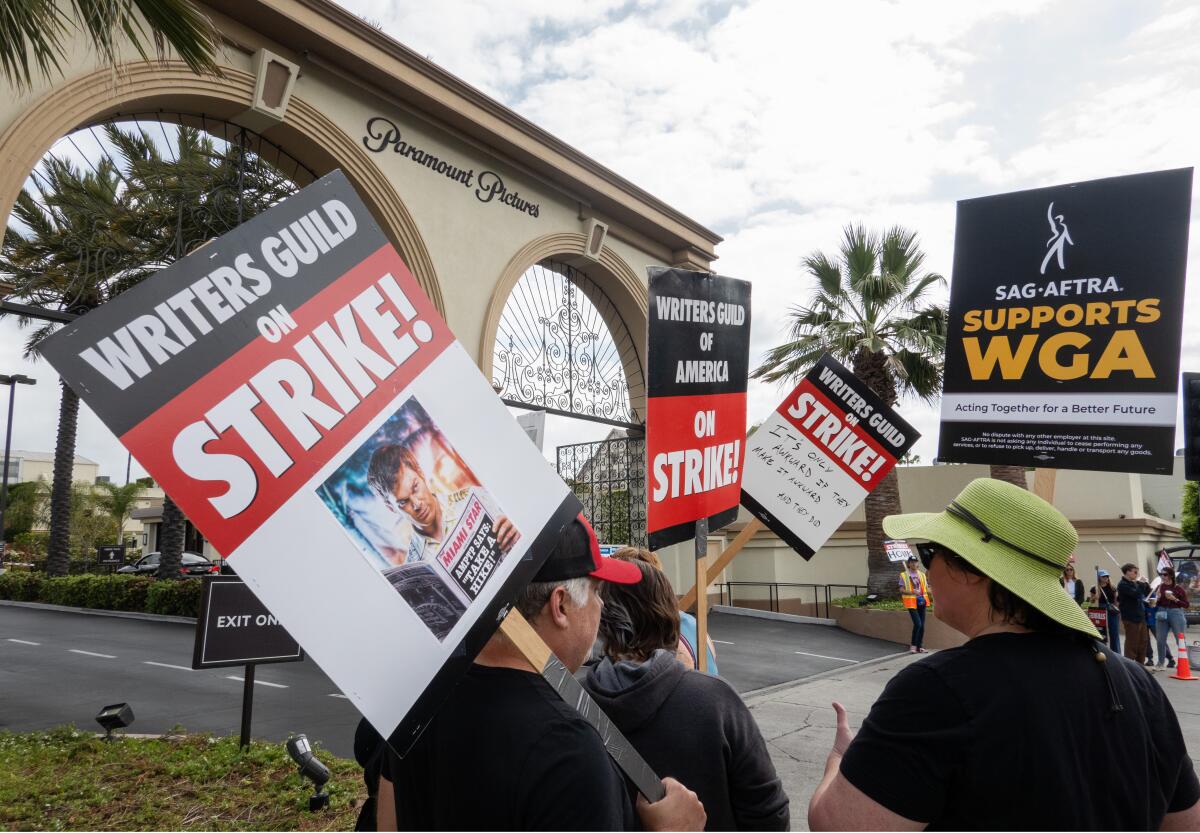
- Share via
Southern California unions and the working people they represent have become the vanguard of the American labor movement. About half of the big strikes in the U.S. this year have taken place in California, with the most consequential centered in Los Angeles — now including the actors’ strike announced by SAG-AFTRA on Thursday.
The members of SAG-AFTRA will join tens of thousands of hotel workers and screenwriters on strike, following big work stoppages just months ago by workers in L.A.’s public schools and at University of California campuses. Labor’s bargaining ambitions are backstopped by a sense of militancy and solidarity not seen in decades.
How did we get here, when for most of the last century Los Angeles was a union backwater embedded in a region synonymous with a sun-drenched suburbia and a conservative, hegemonic business leadership? It was the “open shop capital of America.”
SAG-AFTRA’s national board on Thursday approved a strike action after negotiations with the major studios failed to reach an agreement on a new film and TV contract.
In this season of union resurgence, there are of course many ways in which Southern California is in step with the rest of the country. Low unemployment has emboldened workers of all sorts, while recent inflation makes them anxious to win a big wage advance. More important has been the lingering sense that during the pandemic, workers — “essential” or not — got the short end of the stick when it came to weathering closures, layoffs and dangers to their health. The legitimacy of management, as guardians of their employees’ welfare, took a nosedive.
Some economic issues seem unique to California, however. The exorbitant cost of housing is first and foremost, with 3 in 4 L.A. renters spending more than 30% of their income on shelter. “We can’t afford to live in the place that we work,” says Ayden Vargas, who works at the Fairmont Miramar hotel in Santa Monica and commutes all the way from San Bernardino, in a union video. So it’s hardly surprising that wage increases to make housing more affordable have been a rallying cry in almost every strike, including that of University of California teaching assistants, public school janitors and teachers, hotel workers and even the highly paid but episodically employed Hollywood screenwriters.
Unite Here Local 11, the union leading the hotel strike, wants hotel owners to support housing initiatives that would open vacant rooms to homeless people and create a fund to assist hospitality workers in need of affordable housing. Owners complain that the union is overstepping its role in collective bargaining, but it was just this kind of ambition that generated mass support for the great industrial unions of the mid-20th century — in steel, auto, electrical products and more — when they won victories not just for equal pay for equal work, but also for pensions, health insurance and vacations.
But economic distress isn’t the whole story either. L.A. was the first great American city where the ethnicity and ideology of top union leadership came to truly reflect the heterogeneous character of its working class and remake the local movement. This took root in the 1990s when Miguel Contreras transformed the Los Angeles Federation of Labor from an institution dominated by white building trades to one representative of the rapidly growing Latino proletariat of the region.
Thousands of workers at hotels near the Los Angeles International Airport area walked off the job in a second wave of rolling strikes.
Contreras and his successors, including his wife, Maria Elena Durazo, have had a huge political impact, driving Southland politics to the left. They understood that the labor fight has two fronts: mobilizing a progressive electorate on the one hand while the unions strike and bargain on the other. That approach has generated a political class far different from that of the anti-union conservatives once influential among both Southern California Republicans and Democrats. The city has therefore been a pioneer when it comes to enacting a sort of municipal New Deal, encompassing the local minimum wage and formation of a city-owned bank.
High-profile people willing to support labor make a difference, too. Arrested last month alongside nearly 200 people protesting with the hotel union were Los Angeles City Councilmembers Hugo Soto-Martínez and Nithya Raman and Assemblywoman Wendy Carrillo. “We were here to shed light on the issues working-class Angelenos face,” Soto-Martinez told The Times. When global icon Harrison Ford says, “I believe in unions,” that’s another marker explaining why the Southern California labor movement has achieved such legitimacy.
Above all, it takes organization to win power for working people. Most of the unions on or threatening to strike this summer have existed for decades. They have sometimes been, by turns, stolid, corrupt and ineffectual, but virtually any semblance of organization is better than nothing, because nonunion workers don’t strike. Their anger and grievance merely generate high levels of employment turnover, which is part of why employers, in Southern California and elsewhere, largely resist recognition of a union representing their employees.
A profitable new normal has yet to reveal itself in the face of big tech changes, including AI. But to produce content, you will always need creators.
Despite that resistance, in Southern California — where demographic and occupational change has been so pervasive — old unions have been reinvigorated by a new generation of activists. That became apparent to me when I visited an organizer training school last month hosted by the West Coast region of the United Auto Workers. L.A.-area auto factories are long gone and most aerospace companies have been radically downsized, but the UAW has renewed itself by organizing, with great dedication, tens of thousands of academic workers.
Los Angeles today is a cockpit of labor militancy, but its working-class mobilization is not unique. In each generation one city or region often achieves vanguard status, be it Chicago in the late 19th century, Detroit, Akron and Pittsburgh hosting sit-down strikes and mass picketing in the 1930s; and in the 1950s and 1960s when public employee unionism emerged in New York and Wisconsin before achieving heroic stature in Memphis where African American sanitation workers called on the Rev. Martin Luther King Jr. to aid their struggle.
Now, as labor makes strides nationwide, the enormous vitality in the City of Angels is setting the pace for millions of working people across the nation.
Nelson Lichtenstein is a research professor at UC Santa Barbara.
More to Read
A cure for the common opinion
Get thought-provoking perspectives with our weekly newsletter.
You may occasionally receive promotional content from the Los Angeles Times.
